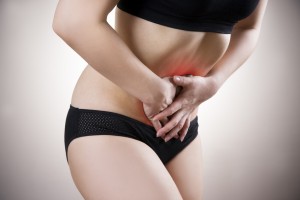Women frequently experience chronic pelvic pain that at times can be debilitating. There are many different medical causes but in some instances no obvious cause can be found. If the pelvic pain occurs monthly around the time of your new menstrual cycle and it seems much worse than typical menstrual cramps then perhaps you have endometriosis.
Normally when a woman begins a new monthly menstrual period the tissue lining of her uterus called endometrium is washed out in her menstrual flow. This process normally takes 4 to 7 days.
For women who suffer from endometriosis this endometrial tissue lining fails to completely wash out and instead ends up in their abdomens and pelvices attached to internal organs like the bladder, ovaries or intestines. This endometrial tissue is still functional so whenever a period occurs this displaced tissue swells and bleeds leading to severe pain. Other symptoms can include back pain, pain with intercourse (dyspareunia), and pain with bowel movements (dyschezia). Women who have difficulty getting pregnant are also more likely to have endometriosis since the repeated tissue swelling can cause scar tissue around the fallopian tubes and ovaries.
The diagnosis of endometriosis is very challenging because there are no accurate blood tests, ultrasounds or x-rays available. The only way to make a definitive diagnosis is for your doctor to perform a laparoscopy. This procedure performed under anesthesia is done by making a small skin incision usually through your navel and placing a camera scope into your abdomen. Your doctor can then visually check for possible areas of endometriosis.
Treatment of endometriosis can also be very challenging. When multiple treatment options are available it usually suggests that none of the choices are overwhelmingly successful. Treatment focuses around pain management and stopping menstrual periods. The first goal is accomplished by using oral anti-inflammatory medications like Advil or Naprosyn. Periods are artificially stopped by using hormones such as birth control pills or injectable Provera. Without fluctuating levels of hormones menstrual periods cease and the displaced endometrial tissue lining does not swell or bleed. The result is improvement in endometriosis pains. For women who fail to respond to these treatments or wish to get pregnant there is the option of laparascopic surgery.
Endometriosis is not a permanent problem for most women. Usually when women stop menstruating at menopause endometriosis pain also stops. Until menopause occurs medicine and surgery can offer some good options at helping to alleviate the chronic pelvic pain associated with endometriosis.
